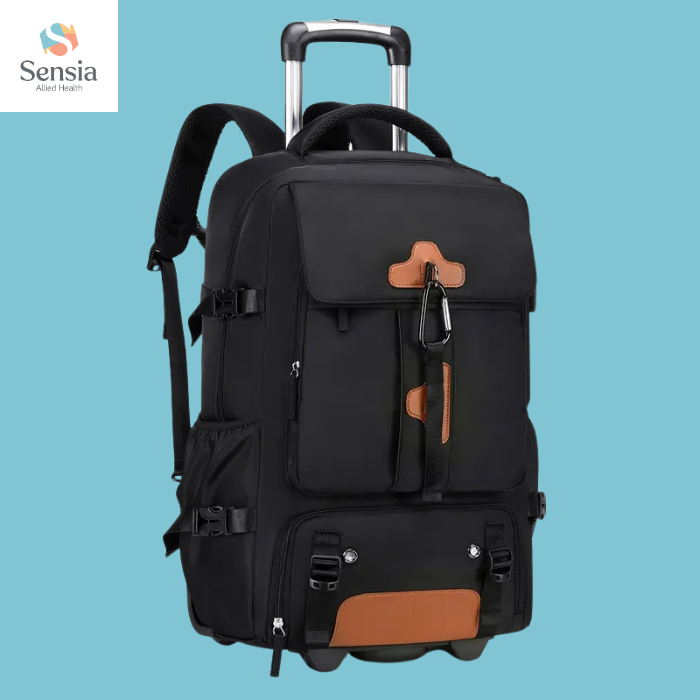5 Tips for Managing a Heavy Backpack
Carrying a heavy backpack every day can take a toll on your body, particularly your back, shoulders, and neck. Whether you’re a student juggling books or an adult balancing work materials, here are some practical tips to help distribute weight, relieve pressure, and prevent injuries.
1. Disperse the Weight You’re Carrying
One of the simplest ways to lighten the load on your back is by spreading the weight across different bags or using available resources.
-
- Separate Your Laptop: Laptops can be heavy, and carrying them in the same bag as your books can lead to an uneven weight distribution. Consider using a separate sleeve or bag for your laptop to minimize strain.
- Use Lockers: If lockers are available at school or work, take advantage of them. Storing heavy items in your locker and only carrying what you need for the day can help lighten the load.
- Carry Books in a Folder: Instead of carrying several heavy books in your backpack, consider using a folder to carry just the essentials. This can help reduce the bulk of your bag and make it easier to carry.

2. Avoid Bags with One Strap
When it comes to backpacks, a design with two straps is always better for evenly distributing weight.
-
- Ditch Over-the-Shoulder Bags: One-strap bags like crossbody bags may look stylish, but they force all the weight onto one shoulder. This can lead to discomfort and long-term strain.
- Opt for a Two-Strap Backpack: A backpack with two adjustable straps helps distribute the weight evenly across both shoulders, reducing the pressure on any single side.

3. Even Out the Straps

Once you’ve chosen a two-strap backpack, make sure the straps are adjusted properly.
-
- Adjust the Length of Both Straps: The straps should be even to ensure the backpack sits comfortably on your back. Uneven straps can cause one shoulder to bear more weight, leading to discomfort and potential injury.
- Ensure Proper Fit: The backpack should sit in the middle of your back with the bottom resting just above your hips. Adjust the straps to make sure your load is as balanced as possible.
4. Use a Backpack Trolley

If carrying a heavy backpack daily is unavoidable, consider using a backpack with wheels.
-
- Alleviate Pressure on the Spine: A trolley-style backpack can significantly reduce the strain on your spine and shoulders by allowing you to roll it instead of carrying it. This is especially useful for students or workers who need to carry large amounts of material over long distances.
5. Stay Active and Exercise
Once of the best ways to prepare your body to handle the weight of a heavy backpack is to keep it strong and healthy.
-
- Engage in Regular Physical Activity: Encourage your child to participate in sports or exercises they enjoy. Activities like swimming, running, or strength training can help build the muscles in the back, shoulders, and core, making it easier to carry the weight of a backpack.

Managing a heavy backpack doesn’t have to be difficult if you follow these simple tips. From spreading out the weight to making sure your backpack is properly adjusted, there are many ways to avoid strain and keep your body comfortable. And don’t forget the power of staying active—building strength through physical activity can make a big difference in how you handle carrying weight each day. Stay mindful of your posture and your backpack’s weight, and your body will thank you!




